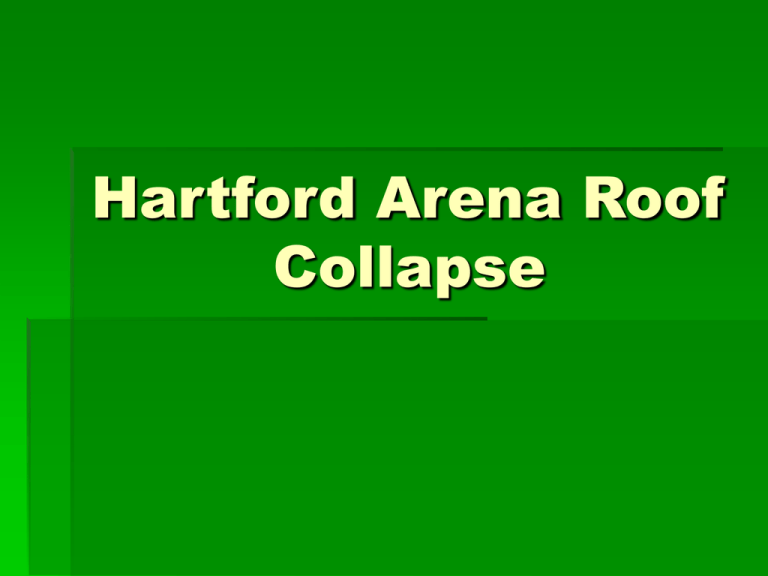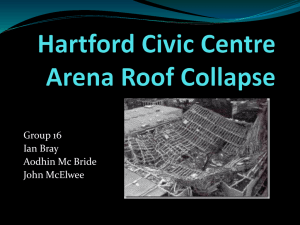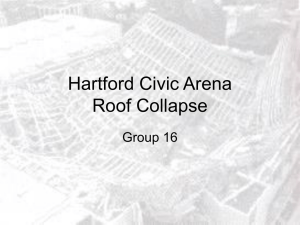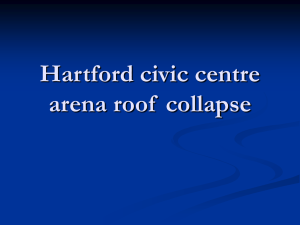Hartford Arena Roof Collapse Group 16.ppt
advertisement

Hartford Arena Roof Collapse January 18th 1978. Snowstorm. Roof plummeted 83 feet to the arena floor. What caused the 300-x 360ft. roof to collapse? Could this disaster have been prevented? Who was responsible? Technical Factors The space frame roof was designed by Fraoi, Blum & Yesselman. Roof consisted of two main layers. 30-ft diagonal bars, braced in the middle by a layer of horizontal bars. The 30-ft bars in the top layer also braced. Several factors. The design for the space frame roof used cruciform section, which has a small radius of gyration. The horizontal bars intersected at different points than the diagonal bars making the structure particularly liable to buckling. The computer analysis used did not take buckling into account. Compression members in the top layer were significantly overloaded. Up to 852% Differences between designs and the as built structure. Reducing connections strengths. Only half of the bracing specified for the exterior rods was used and interior rods were only partially braced. Human & Managerial Factors The guilty people, engineers and construction managers. Contract was divided into 5 subcontracts. Construction manager in a coordinating role. Uncertainty about who was responsible for certain aspects. Qualified structural engineer oversee the construction. Construction manager refused, waste of money. The engineers were notified of excessive deflections in the roof of the arena on a number of occasions. They dismissed the concerns saying that discrepancies between the actual and theoretical values were to be expected. Subcontractor questioned deflections. difficulties while fitting steel frame construction , “deal with the problem or be responsible for delays”. Year after, a member of the public notified the engineers of his concern at the distinct downward deflection in the roof. “everything is fine” Connections were not assembled according to the designs. Reduced strength. American Institute of Steel Construction code violated. Bad management or incompetence on the part of the engineer. Lessons Learned. Save money, innovative design and state of the art computer analysis. Several agencies were employed to illuminate the cause of the collapse and attribute the blame accordingly. Roof began failing as soon as it was completed due to design deficiencies. Torsional buckling as opposed to lateral buckling. Six years after, out of court settlement. “Should one man / contractor hold ultimate responsibility for such a project and do too many cooks spoil the broth?” The roof designed was not the same as the roof built. Computer programme is only as good as its programmer. In this case the programme in question did not take buckling into account. More care with the design & redundancy employed, the failure of a few members would not have resulted in this huge collapse. A second opinion needed. Peer reviews are an essential safety measure. “Cut corner” project. It raises the question whether the factor of safety should be increased for buildings of high occupancy? Space Frame Roof Section of Roof






